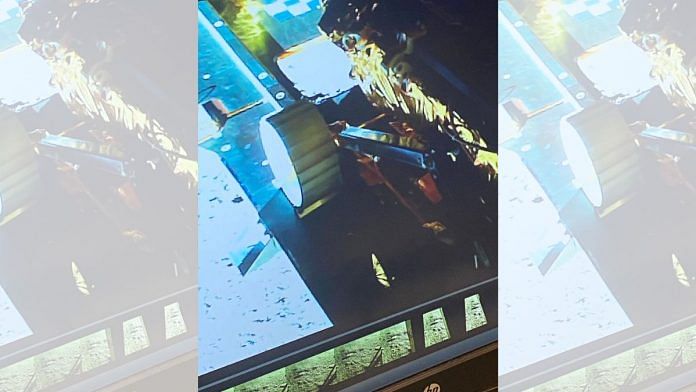New Delhi: India’s successful moon landing Wednesday ushers in a new era for the Indian Space Research Organisation’s (ISRO) space missions, as for the first time ISRO now has a rover plying on another celestial body. However, being more that 384,400 km away from Moon, the mission team has no way of navigating the satellite.
The Pragyan rover, which formed part of the just-landed Chandrayaan-3, is thus on its own on the Moon. The rover not only has to be able to see its surroundings, but it also has to make decisions about where to move and avoid hazardous obstacles.
To do this, Omnipresent Robot Tech — a Noida-based company — has been working alongside ISRO to develop a software for Pragyan that uses just two cameras to create a 3D map of the region its exploring.
“With just two pairs of eyes, we are able to navigate the world very easily. That is because the ‘software’ in our brain is very smart,” Aakash Sinha, CEO of Omnipresent Robot Tech, told ThePrint in an interview Thursday.
“The software has been done very smartly, so that we can keep the size and weight of the rover small,” he added.
Mimicking how humans perceive and navigate their surroundings, Sinha’s team used just two cameras to take images from slightly different positions and then generate a 3D model.
“This allows the rover to know how far it can go, if it can climb a particular rock — and once it knows all this, it can autonomously plan a safe path,” he said.
ISRO’s Chandrayaan-3 landed safely near the lunar South Pole Wednesday, marking a major milestone for space exploration in India. This made India the fourth country to successfully perform a soft landing on the Moon, following the US, Russia (then USSR), and China.
The Chadrayaan-3 is, however, the very first in the world to land near the lunar south pole — rich in water resources and with permanently shadowed craters — that astronomers have wanted to explore for decades.
Over the next two weeks, the craft’s Vikram lander and Pragyan rover will perform experiments on the lunar surface with a total of six payloads, while the seventh payload continues to observe Earth from the propulsion module which is orbiting the Moon.
Also read: ‘India don dey Moon now’: How world media reported Chandrayaan-3, from Pidgin to Queen’s English
‘Pragyan software could be useful for defence applications’
Sinha’s team has been working with ISRO since the first lunar mission Chandrayaan 1. For Chandrayaan 1, the team provided the modules that helped orient the orbiter around the Moon, he said.
Sinha added: “That was a very good learning experience for us, and we continued our association with ISRO.”
According to him, the software used in the Pragyan rover not only has application in future space programme, but could also be used in autonomous rovers for defence applications.
Sinha explained that in border areas and conflict zones, autonomous rovers with this software could be deployed to map out a new terrain without risking human lives.
Sinha is a faculty at the Shiv Nadar University, while simultaneously running a drones and robotic lab at the Gautam Buddh University in Noida.
Omnipresent Robot Tech has also worked with the government to create digital maps of more than 10,000 villages using drones under the SVAMITVA programme.
“That will help the government with proper documentation for land ownership and allotment,” Sinha said.
(Edited by Poulomi Banerjee)
Also read: Chandrayaan 1, 2 & 3 — how ISRO used each Moon mission as test for next, more complex expedition



